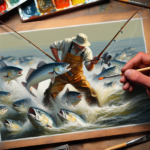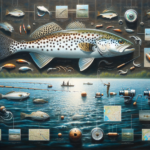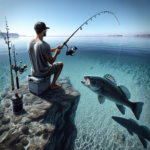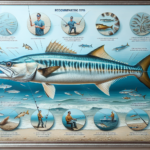Fishing Tips on How to Catch Striped Bass
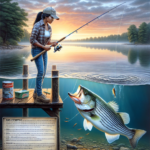
Introduction
Striped bass, also known as stripers, are a highly sought-after species in the world of sport and recreational fishing. Known for their powerful fight and delicious taste, these fish attract anglers from all over. This article will provide a comprehensive guide on how to catch striped bass, covering everything from their physical characteristics and behavior to the best fishing techniques, gear, and locations. Whether you’re a seasoned angler or a beginner, these tips will help you improve your chances of landing this prized catch.
Fish Species Overview
Description
Striped bass are easily recognizable by their sleek, elongated bodies and distinctive horizontal stripes running from gill to tail. They typically range in color from silvery-white to dark green or blue on their backs, with a white belly. Adult striped bass can grow quite large, often reaching lengths of 20 to 40 inches and weights of 10 to 30 pounds, although some individuals can exceed 50 pounds.
Habitat
Striped bass are versatile fish that can thrive in a variety of environments, including freshwater, saltwater, and brackish water. They are commonly found along the Atlantic coast of North America, from the St. Lawrence River in Canada to the Gulf of Mexico. They also inhabit many inland lakes and rivers, particularly those with access to the ocean. Popular striped bass fishing locations include the Chesapeake Bay, Hudson River, and various reservoirs and lakes across the United States.
Behavior
Striped bass are predatory fish with a diet that includes smaller fish, crustaceans, and invertebrates. They are known for their aggressive feeding habits, often forming large schools to hunt. Spawning typically occurs in the spring when water temperatures reach 60 to 68 degrees Fahrenheit. During this time, striped bass migrate to freshwater rivers and streams to lay their eggs. They are most active during dawn and dusk, making these times ideal for fishing.
Challenges
Anglers targeting striped bass often face several challenges, including their migratory nature, which can make them difficult to locate. Additionally, their feeding patterns can be unpredictable, and they can be wary of certain baits and lures. Understanding their behavior and habitat is crucial for successful fishing.
Best Time to Catch Striped Bass
Seasonal Considerations
The best time to catch striped bass varies depending on the region, but generally, spring and fall are considered prime seasons. In the spring, striped bass migrate to freshwater rivers and streams to spawn, making them more accessible to anglers. Fall is another excellent time as they feed heavily to prepare for winter.
Time of Day
Striped bass are most active during low-light conditions, making early morning and late evening the best times to fish. Night fishing can also be productive, especially during the warmer months when they tend to feed more actively after dark.
Weather Conditions
Ideal weather conditions for striped bass fishing include overcast days with calm waters. Cloudy skies reduce light penetration, making stripers more likely to venture into shallower waters to feed. Additionally, stable weather patterns are preferable, as sudden changes can disrupt their feeding behavior.
Top Fishing Techniques for Striped Bass
Technique 1: Live Bait Fishing
Live bait fishing is one of the most effective methods for catching striped bass. Using live bait such as eels, shad, or herring can entice even the most cautious stripers. Rigging the bait on a circle hook and allowing it to swim naturally can increase your chances of a strike. This technique is particularly effective in areas with strong currents or near structures where striped bass are likely to be hunting.
Technique 2: Trolling
Trolling involves dragging lures or bait behind a moving boat at various depths. This technique covers a large area and can help locate schools of striped bass. Using deep-diving plugs, umbrella rigs, or weighted jigs can be effective. Adjusting the trolling speed and depth based on water conditions and fish activity is crucial for success.
Technique 3: Surf Casting
Surf casting is a popular technique for shore anglers targeting striped bass. Using long rods and heavy sinkers, anglers can cast baits or lures far into the surf zone where stripers often feed. Popular baits for surf casting include clams, sandworms, and cut bait. Lures such as topwater plugs, spoons, and soft plastics can also be effective.
Pro Tips
- Match the hatch: Use baits and lures that mimic the local forage species.
- Pay attention to tides: Striped bass are more active during incoming and outgoing tides.
- Use a fish finder: This can help locate schools of striped bass and determine the best fishing depth.
Recommended Gear for Catching Striped Bass
Fishing Rod and Reel
For striped bass fishing, a medium to heavy-action rod paired with a sturdy spinning or baitcasting reel is recommended. The rod should be 7 to 9 feet long to provide the necessary leverage for casting and fighting large fish. Reels with a high line capacity and smooth drag system are essential for handling the powerful runs of striped bass.
Fishing Line
Braided line with a strength of 20 to 50 pounds is ideal for striped bass fishing due to its sensitivity and low stretch. Fluorocarbon leaders of 20 to 30 pounds can be used to reduce visibility and increase abrasion resistance.
Hooks and Baits
Circle hooks in sizes 1/0 to 5/0 are commonly used for live bait fishing. For artificial lures, consider using topwater plugs, swimbaits, jigs, and spoons. Natural baits such as eels, shad, herring, clams, and sandworms are highly effective.
Additional Gear
- Bobbers: Useful for suspending live bait at a desired depth.
- Sinkers: Necessary for keeping bait near the bottom in strong currents.
- Leaders: Fluorocarbon leaders help reduce line visibility and prevent break-offs.
Best Locations to Find Striped Bass
General Locations
Striped bass can be found in a variety of water bodies, including coastal areas, estuaries, rivers, and lakes. They often inhabit areas with strong currents, structures such as rocks and piers, and regions with abundant baitfish.
Specific Regions
Some of the most popular striped bass fishing spots include the Chesapeake Bay, Hudson River, Cape Cod, and the Sacramento-San Joaquin Delta. Inland reservoirs and lakes such as Lake Texoma and Lake Lanier are also known for their healthy striped bass populations.
Common Mistakes to Avoid
Mistake 1: Using the Wrong Gear
Using gear that is too light or too heavy can hinder your success. Ensure your rod, reel, line, and hooks are appropriate for the size and strength of striped bass.
Mistake 2: Ignoring Tides and Currents
Striped bass are heavily influenced by tides and currents. Fishing during slack tide or ignoring current patterns can result in fewer bites. Plan your trips around tidal movements for better results.
Mistake 3: Overlooking Local Knowledge
Local anglers and bait shops often have valuable insights into current fishing conditions and effective techniques. Ignoring this information can lead to missed opportunities.
Catch and Release Tips
Importance of Conservation
Practicing catch and release helps maintain healthy striped bass populations and ensures future generations can enjoy this sport. Ethical fishing practices are crucial for conservation.
Proper Handling Techniques
- Use wet hands or a wet cloth to handle the fish to protect its slime coat.
- Avoid keeping the fish out of the water for extended periods.
- Use circle hooks to reduce the risk of deep hooking.
- Gently revive the fish by holding it in the water until it swims away on its own.
Legal Considerations
Be aware of local regulations regarding size limits, bag limits, and protected areas. Always check for any special permits required for striped bass fishing in your area.
Frequently Asked Questions (FAQs)
What is the best bait for catching striped bass?
The best bait for catching striped bass varies by season and location. Live baits such as eels, shad, and herring are highly effective. Natural baits like clams and sandworms also work well. Artificial lures such as topwater plugs, swimbaits, and jigs can be productive, especially when mimicking local forage species.
Where is the best place to fish for striped bass?
Striped bass are commonly found in coastal areas, estuaries, rivers, and lakes. Popular fishing spots include the Chesapeake Bay, Hudson River, Cape Cod, and various inland reservoirs like Lake Texoma and Lake Lanier.
What time of day is best for catching striped bass?
Early morning and late evening are the best times to catch striped bass, as they are most active during low-light conditions. Night fishing can also be productive, especially during warmer months.
What type of fishing line should I use for striped bass?
Braided line with a strength of 20 to 50 pounds is recommended for its sensitivity and low stretch. Fluorocarbon leaders of 20 to 30 pounds can help reduce visibility and increase abrasion resistance.
Do I need a special fishing license to catch striped bass?
Fishing license requirements vary by location. Check local regulations for specific licensing requirements, size limits, bag limits, and any special permits needed for striped bass fishing in your area.
What is the best technique for catching striped bass?
Live bait fishing, trolling, and surf casting are among the most effective techniques for catching striped bass. Each method has its advantages, and the best technique may vary based on conditions and personal preference.
Are there any specific weather conditions that improve the chances of catching striped bass?
Overcast days with calm waters are ideal for striped bass fishing. Cloudy skies reduce light penetration, making stripers more likely to venture into shallower waters to feed. Stable weather patterns are also preferable.
Can I catch striped bass from the shore, or do I need a boat?
Striped bass can be effectively caught from both shore and boat. Surf casting is a popular shore fishing technique, while trolling and live bait fishing are commonly used from boats. Each method has its own set of advantages and challenges.
How can I improve my chances of landing a big striped bass?
To catch larger striped bass, use bigger baits or lures that mimic larger forage species. Focus on fishing during prime times such as dawn, dusk, and night. Target areas with strong currents, structures, and abundant baitfish. Using a fish finder can also help locate larger individuals.
What should I do if I plan to release striped bass after catching them?
Practice ethical catch and release by using wet hands or a wet cloth to handle the fish, avoiding extended periods out of the water, and using circle hooks to reduce deep hooking. Gently revive the fish by holding it in the water until it swims away on its own. Be aware of local regulations regarding size limits and protected areas.
Conclusion
Striped bass fishing offers an exciting and rewarding experience for anglers of all skill levels. By understanding their behavior, using the right techniques and gear, and practicing ethical fishing practices, you can increase your chances of success. Whether you’re fishing from shore or boat, in freshwater or saltwater, these tips will help you land more striped bass and contribute to the conservation of this valuable species. So grab your gear, head to your favorite fishing spot, and enjoy the thrill of catching striped bass!

